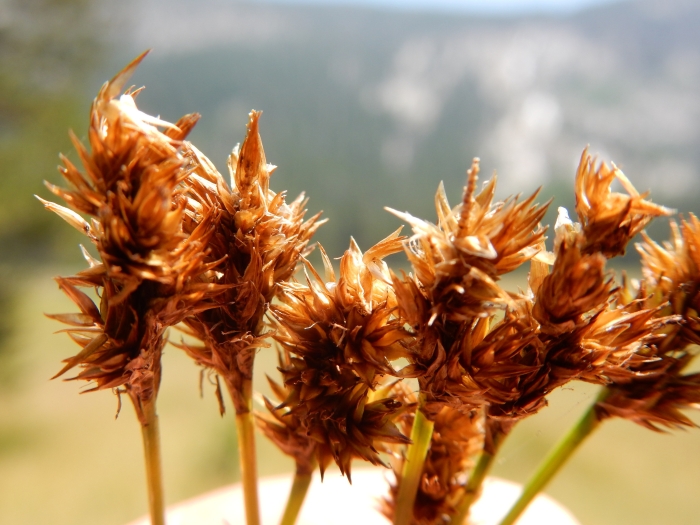Maclov’s Sedge
(Carex macloviana)
Maclov’s Sedge (Carex macloviana)
/
/

Matt Lavin
CC BY 4.0
Image By:
Matt Lavin
Recorded By:
Copyright:
CC BY 4.0
Copyright Notice:
Photo by: Matt Lavin | License Type: CC BY 4.0 | License URL: http://creativecommons.org/licenses/by/4.0/ | Rights Holder: Matt Lavin | Publisher: iNaturalist | Date Created: 2018-08-04T13:58:28-07:00 |























Estimated Native Range
Summary
Carex macloviana, commonly known as Maclov’s Sedge, Thickhead Sedge, or Falkland Island Sedge, is a perennial sedge native to the cool temperate and subantarctic regions of South America, Greenland, N. America and N. Europe. It thrives in moist habitats such as wet grasslands, peaty soils, and along streams and bogs. This sedge typically grows to a height of 0.5-1.5 feet (0.15-0.5 meters) and forms dense tussocks of narrow, grass-like leaves. The flowers are green and inconspicuous, blooming in the spring, and are often overlooked in favor of the plant’s foliage.
Carex macloviana is valued for its ability to thrive in wet conditions and is often used in water gardens, rain gardens, and for erosion control in riparian plantings. It is also suitable for creating a naturalistic or wild garden look. This sedge prefers full sun to part shade and grows best in medium to slow-draining clay or loam soils, requiring medium to high amounts of water. While generally low-maintenance, it can be susceptible to rust and root rot if conditions are too dry. It is not known to be invasive outside its native range but should be monitored to ensure it does not outcompete other species in garden settings.CC BY-SA 4.0
Carex macloviana is valued for its ability to thrive in wet conditions and is often used in water gardens, rain gardens, and for erosion control in riparian plantings. It is also suitable for creating a naturalistic or wild garden look. This sedge prefers full sun to part shade and grows best in medium to slow-draining clay or loam soils, requiring medium to high amounts of water. While generally low-maintenance, it can be susceptible to rust and root rot if conditions are too dry. It is not known to be invasive outside its native range but should be monitored to ensure it does not outcompete other species in garden settings.CC BY-SA 4.0
Plant Description
- Plant Type: Grass
- Height: 0.5-1.5 feet
- Width: 1-2 feet
- Growth Rate: Moderate
- Flower Color: N/A
- Flowering Season: Summer, Fall
- Leaf Retention: Evergreen
Growth Requirements
- Sun: Full Sun, Part Shade
- Water: Medium, High
- Drainage: Medium, Slow
Common Uses
Erosion Control, Low Maintenance, Water Garden
Natural Habitat
native to the cool temperate and subantarctic regions of South America, Greenland, N
Other Names
Common Names: Maclov’s Sedge , Thickhead Sedge , Maclov’s Carex
Scientific Names: Carex macloviana d'Urv. , Carex leporina , Carex leporina , Carex leporina var. ovata , Carex macloviana f. macloviana , Carex macloviana subsp. macloviana , Carex propinqua , Vignea macloviana (d'Urv.)
GBIF Accepted Name: